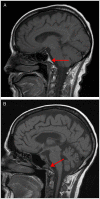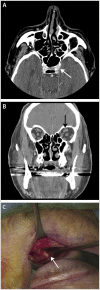Diplopia due to ocular motor cranial neuropathies
- PMID: 25099103
- PMCID: PMC10563973
- DOI: 10.1212/01.CON.0000453309.44766.b4
Diplopia due to ocular motor cranial neuropathies
Abstract
Purpose of review: Determining which cranial nerve(s) is (are) involved is a critical step in appropriately evaluating a patient with diplopia.
Recent findings: New studies have looked at the various etiologies of cranial nerve palsies in the modern imaging era. The importance of the C-reactive protein test in evaluating the possibility of giant cell arteritis has recently been emphasized.
Summary: Dysfunction of the oculomotor (third), trochlear (fourth), or abducens (sixth) cranial nerve will produce ocular misalignment and resultant binocular diplopia or binocular blur. A misalignment in the vertical plane of as small as 200 μm is enough to produce diplopia. Diagnosing diplopia from a cranial nerve abnormality requires an understanding of structure (the anatomy of the cranial nerves from nucleus to muscle), function (the movements controlled by the cranial nerves), possible etiologies, and exceptions to the rules.
Figures









References
-
- Hoya K,, Kirino T. Traumatic trochlear nerve palsy following minor occipital impact—four case reports. Neurol Med Chir (Tokyo) 2000; 40 (7): 358–360. - PubMed
-
- Trobe JD. Third nerve palsy and the pupil. Footnotes to the rule. Arch Ophthalmol 1988; 106 (5): 601–602. - PubMed
-
- Kissel JT,, Burde RM,, Klingele TG,, Zeiger HE. Pupil-sparing oculomotor palsies with internal carotid-posterior communicating artery aneurysms. Ann Neurol 1983; 13 (2): 149–154. - PubMed
-
- Schatz NJ,, Savino PJ,, Corbett JJ. Primary aberrant aculomotor regeneration. A sign of intracavernous meningioma. Arch Neurol 1977; 34 (1): 29–32. - PubMed
Publication types
MeSH terms
LinkOut - more resources
Full Text Sources
Other Literature Sources
Medical
Research Materials
